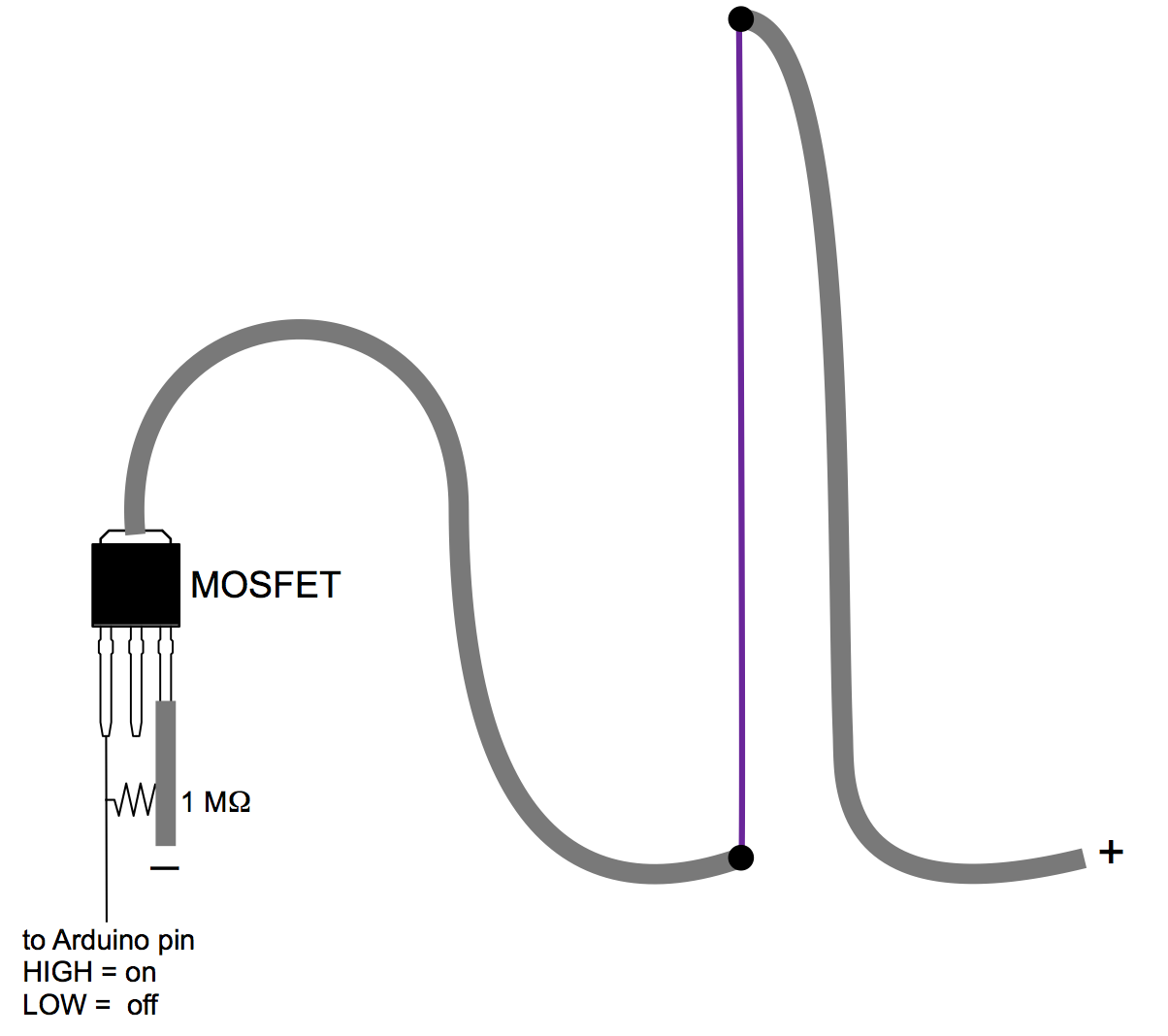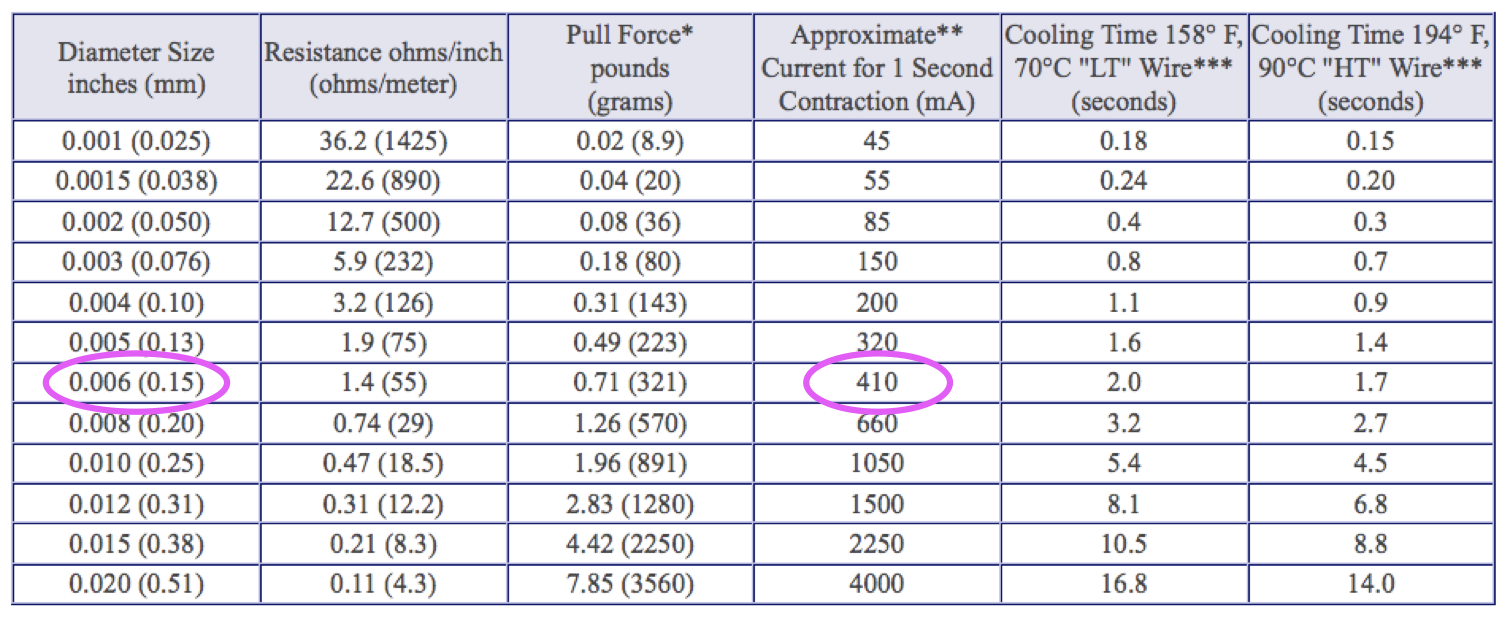Shape Changing Textile
by necsys
Due: Tuesday, March 6, 2012
For this assignment you will create a shape-changing textile, controlled by an Arduino. Design a textile construction that changes shape using flexinol (nitinol) wire. Here is a diagram showing the electrical configuration for one curling nitinol flap (nitinol drawn in purple):

Here is a table of the properties of flexinol wire of different diameters, with the .006″ diameter circled:
As you design and build your project, measure and calculate the following properties:
- Measure the resistance of at least one of the nitinol actuators in your design.
- Use Ohm’s Law to calculate how much current will run through this actuator. Note: this should not exceed 410mA for the .006″ wire! On the other hand, you’ll probably need at least 350mA to get a good response from the wire.
- IMPORTANT NOTE: plan to use either the computer (which supplies 5V) or the battery (which supplies 3.7V) to power your project. You can’t move back and forth between the two without potentially damaging the wire. As long as the switch on your LilyPad is in the ON position when it is plugged into your computer you are using battery power.
- Use your calculations to determine how much resistance you need. Add or eliminate resistance as needed.
- Measure the current running through your finished actuator.
Create a post (on this site) that documents your project and measurements. Make sure to add your post to the the Shape Changing Textile category. Your page should include:
- a few sentences describing your project
- pictures of your work in progress
- at least one picture of your completed project
- a short video of your completed project
- a table of the electrical measurements and calculations you made
Bring your project to class on the 6th for demos!
Additional resources
Basic technical information on flexinol wire
Datasheet for flexinol wire (in depth technical info)
A tutorial Jie wrote for working with nitinol & paper
Jie’s videos
Videos from XS labs
Marcelo Coelho’s shutters
